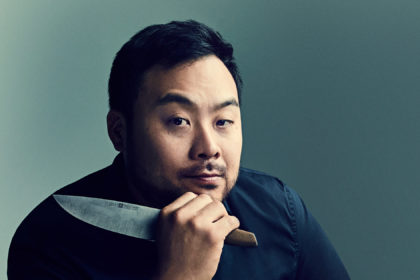
In the weeks since the coronavirus pandemic forced restaurants around the world to remain open only for takeout or to close until stay-at-home restrictions are lifted, food icon David Chang has emerged as an advocate for the industry.
The founder of the Momofuku restaurant group says government intervention is desperately needed for food service to survive — without it, only big chains will remain. “I have a hard time seeing [smaller establishments and even chef-driven eateries] survive and making it through the end of this.”
“Telling restaurants they should close or only do delivery or just be 50% open was a death sentence,” Chang says. “And I think all restaurants would have happily have done so if we were given some type of safety net.”
The restaurant industry has suffered significant job losses since the outbreak of COVID-19. The Momofuku Group laid off 800 employees during the pandemic. According to the National Restaurant Association, 8 million restaurant employees have been laid off or furloughed.
Chang and Marguerite Mariscal, CEO of Momofuku group, shared their thoughts on what can be done to save the restaurant industry in Vice Media’s new “Shelter in Place series.”
“Right now, any small business owner in New York is put in a very precarious position where they either are closing, which means they can’t financially afford to pay their staff, or they’re trying to stay open to get any sort of income that will then allow them to keep people have,” Mariscal says.
Though restaurants have business interruption insurance, that only covers physical business damage. Restaurants can still remain open for takeout, but with great risks.
“I think we’re all looking for a little guidance,” Mariscal says. “If restaurants are going to be deemed an essential business, then treat it that way, right? Like, what are the protocols or safety procedures that we should be using to make sure that we’re operating in the, you know, safest, best light? But instead, you have business-to-business everyone making these calls. And I don’t think we feel were the best equipped to make them.”
Like who is regulating proper PPE use among restaurant workers? Should staff all be wearing gloves? Is a cloth mask good enough or should cooks wear a N95 mask? Where is the supply chain for restaurants to get this gear that wouldn’t hurt the medical supply chain? Chang says the lack of guidance from government leadership “it was so bad, it was embarrassing.”
“We need the state-level authorities, because it’s not going to happen from a federal level to say, ‘Hey, it’s dangerous to make food, in a COVID-19 world, this is what you need to do,’” he says. “There are a lot of people serving food in maybe not a safe situation.”
Government aid to help the restaurant industry is only short-sighted, Chang adds, because it’s not covering beyond summer. Unemployment will only cover a few months. There is no unemployment coverage for undocumented workers. Businesses can only receive money from the economic stimulus bill, CARES Act, if they rehire 100% of their workforce by June 30. Chang points to the aftermath of September 11 as an example. Restaurants closed for only a few days, but it took years for the New York tourism industry took years to recover.
The restaurants that will survive the pandemic will be large chain restaurants with big pocketbooks and corporate power – like McDonald’s and Taco Bell.
“That’s unfortunately the future that I feel we’re headed to unless we can have proper intervention and guidance and support and leadership from the government,” Chang says. “There’s a good chance Momofuku may never reopen again. Or the restaurant that you loved to go to so much in your neighborhood may never reopen again. If we don’t support the supply chain and the purveyors and the farmers and the workers all surrounding it, there may not be a new restaurant that’s going to be delicious, that’s going to have the vibrancy that you want, for a considerable amount of time. People are going to realize just how important the food industry is and the workers that have been neglected for so long, I think they’re going to realize, holy shit, we didn’t realize how much we depend on the food industry.”
What will restaurants look like, after the pandemic? Sanitation standards will be increased, there will be greater oversight from the FDA and CDC. But the future “is going to be predicated on something that we have no preparation for,” Chang says. Ghost kitchens, delivery and e-commerce will become the driving force of restaurants, operations most restaurants are not set-up to implement.
“What you’re going to see is maybe there’s less of a restaurant industry and it’s more of a food industry,” Mariscal says. “Everyone’s going to have to reimagine how they make money.”
Chang says big corporate, quick-service restaurants are prepared. Large chains “they’re never touching the food, it’s just an assembly process,” Chang says. Smaller restaurants, independent diners and even upscale chef-driven eateries rely on culinary touches, though. Chefs taste the food and experiment with dishes.
“It would be hard to live in that world where there isn’t variety,” Chang says. But “in terms of food, I think there’s going to be less choice.”
